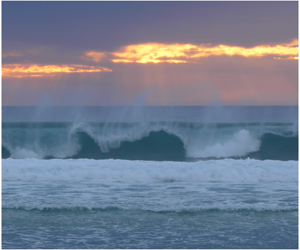Article contents
An Eulerian model for sea spray transport and evaporation
Published online by Cambridge University Press: 09 June 2020
Abstract

Reliable estimates of the fluxes of momentum, heat and moisture at the air–sea interface are essential for accurate long-term climate projections, as well as the prediction of short-term weather events such as tropical cyclones. In recent years, it has been suggested that these estimates need to incorporate an accurate description of the transport of sea spray within the atmospheric boundary layer and the drop-induced fluxes of momentum, heat and moisture, so that the resulting effects on atmospheric flow can be evaluated. In this paper we propose a model based on a theoretical and mathematical framework inspired from kinetic gas theory. This approach reconciles the Lagrangian nature of spray transport with the Eulerian description of the atmosphere. In turn, this enables a relatively straightforward inclusion of the spray fluxes and the resulting spray effects on the atmospheric flow. A comprehensive dimensional analysis has led us to identify the spray effects that are most likely to influence the speed, temperature and moisture of the airflow. We also provide an example application to illustrate the capabilities of the model in specific environmental conditions. Finally, suggestions for future work are offered.
- Type
- JFM Papers
- Information
- Copyright
- © The Author(s), 2020. Published by Cambridge University Press
References
- 2
- Cited by


